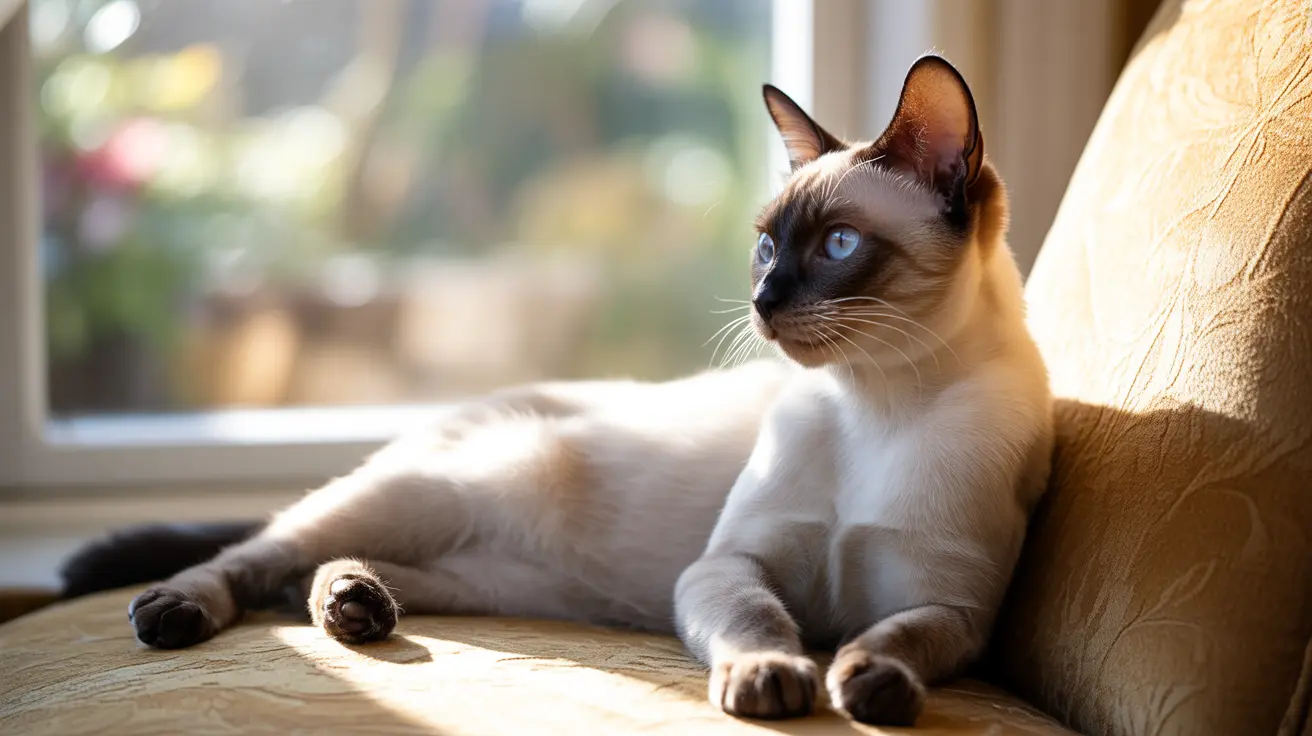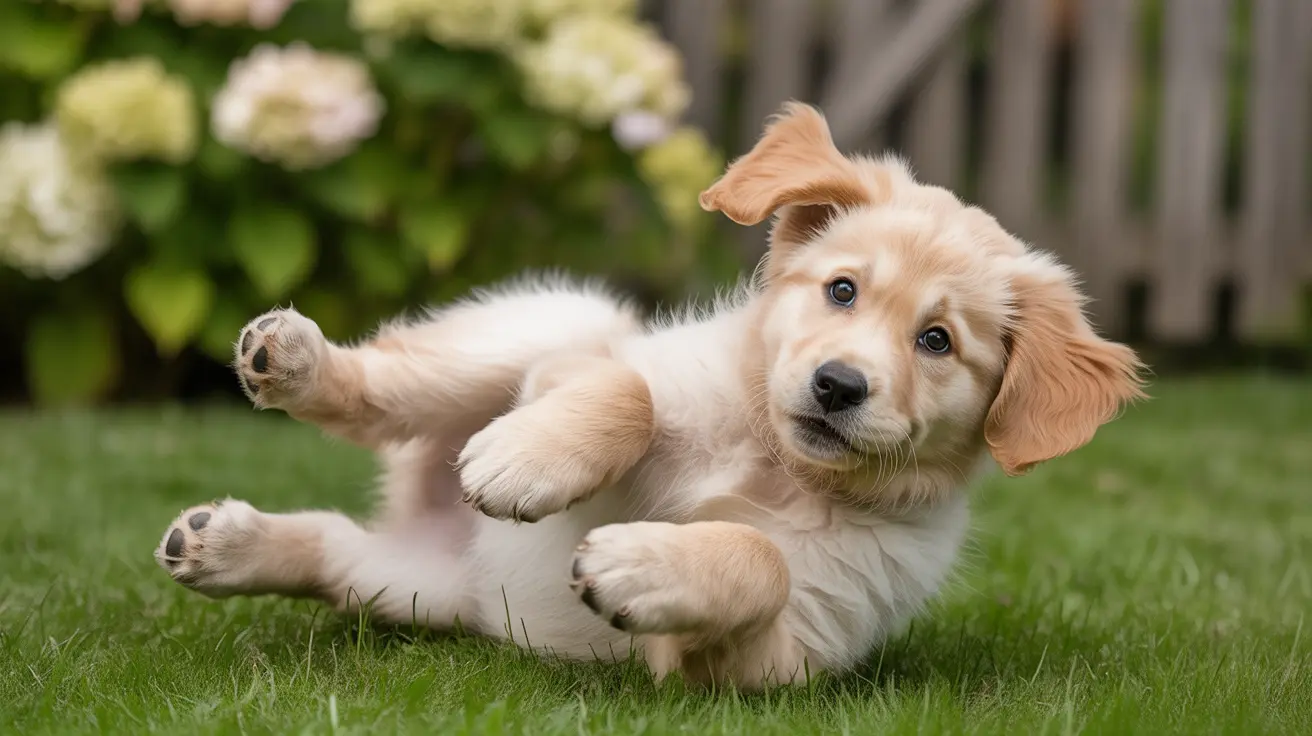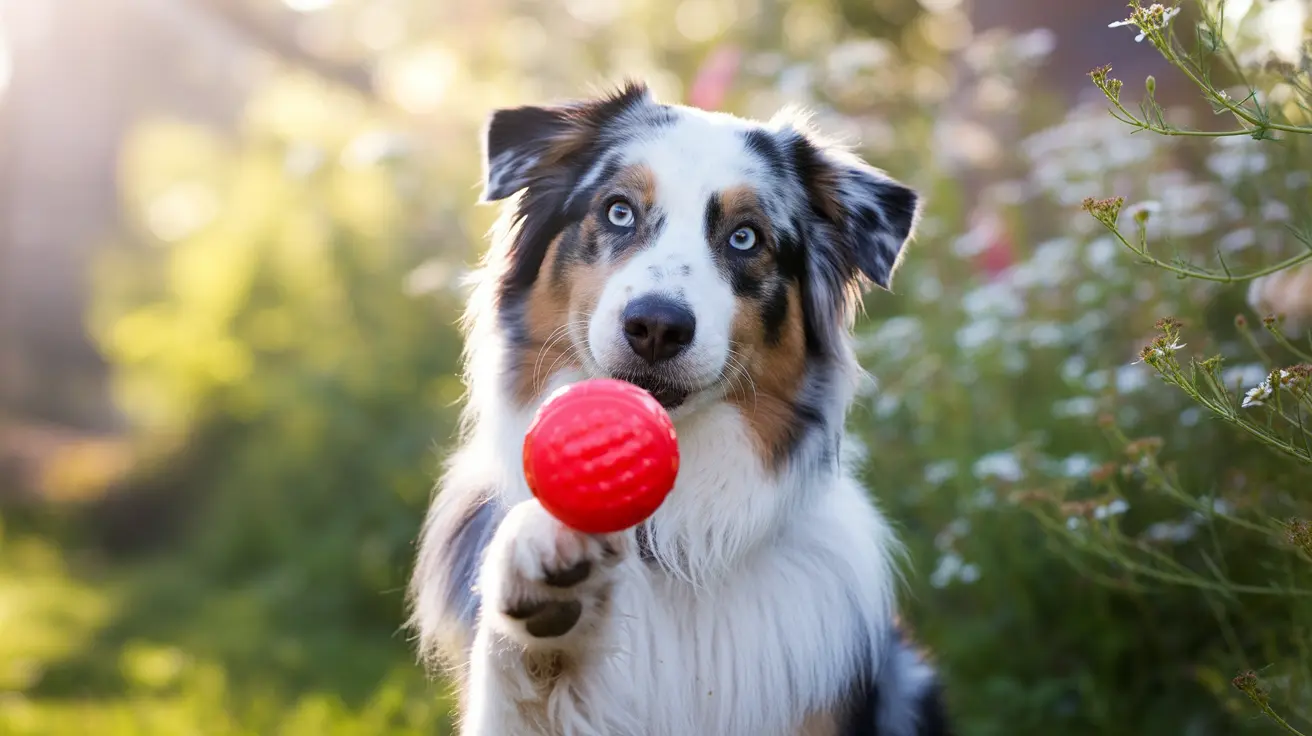4 Cat Breeds to Avoid According to Veterinarian: Health and Welfare Concerns Every Cat Owner Should Know
When it comes to choosing a feline companion, many prospective cat owners are drawn to specific breeds for their unique appearances or perceived personality traits. However, an experienced English veterinarian has recently sparked widespread discussion by sharing his professional perspective on four cat breeds he would never choose to own personally. This candid assessment, based on years of clinical experience, highlights serious concerns about health issues, behavioral challenges, and ethical breeding practices that potential cat owners should carefully consider.
While these opinions represent one veterinary professional's viewpoint and acknowledge that individual cats can vary greatly within breeds, the underlying health and welfare concerns he raises are supported by extensive veterinary research. Understanding these cat breeds to avoid according to veterinarian recommendations can help prospective pet owners make more informed decisions that prioritize both animal welfare and their own lifestyle compatibility. Let's explore these four breeds and the specific concerns that led to this veterinarian's strong stance against recommending them as pets.
Bengal Cats: Beautiful But Challenging Hybrids
Bengal cats, with their striking spotted coats reminiscent of wild leopards, often captivate potential owners with their exotic appearance. However, this veterinarian's concerns about Bengalkatzen stem from their hybrid nature as crosses between domestic cats and wild Asian leopard cats. This genetic heritage brings significant behavioral and care challenges that many households are unprepared to handle.
Bengals are known for their high energy levels and need for extensive activity, often displaying more aggressive tendencies than typical domestic cats. Their wild ancestry manifests in behaviors that can be problematic in home environments, including territorial marking, destructive scratching, and difficulty with standard litter box training. Additionally, Bengal cats are susceptible to specific health issues including cataracts, hypertrophic cardiomyopathy, and renal atrophy, making them prone to heart, bladder, and kidney diseases that require ongoing veterinary care.
The extensive activity requirements of Bengal cats mean they need large spaces, multiple climbing structures, and constant mental stimulation. Without adequate outlets for their energy, these cats can become destructive and exhibit behavioral problems that strain the human-animal bond. For most typical households seeking a companionable pet, the Bengal's demands often exceed what owners can realistically provide.
Persian Cats: Victims of Extreme Brachycephalic Breeding
Persian cats represent one of the most concerning examples of how selective breeding for appearance has compromised animal welfare. This veterinarian strongly advises against purchasing Persian cats due to the serious health issues caused by extreme brachycephalic (flat-faced) breeding practices that prioritize aesthetic appeal over feline well-being.
The characteristic flat face of Persian cats leads to brachycephalic airway syndrome, causing chronic breathing difficulties that can range from mild discomfort to life-threatening respiratory distress. These cats often struggle with normal activities like eating, drinking, and sleeping due to their compromised airways. The facial structure abnormalities also contribute to persistent eye drainage issues, with many Persians suffering from chronic tear staining and increased risk of eye infections.
Dental problems are another significant concern in Persian cats, as their shortened facial structure leaves inadequate space for proper tooth alignment. This leads to overcrowded teeth, increased plaque buildup, and higher rates of periodontal disease. Additionally, Persians are prone to polycystic kidney disease, a hereditary condition that can lead to kidney failure, and their long coats require extensive daily grooming to prevent painful matting and skin infections.
The veterinarian's stance against Persian cats reflects growing concerns within the veterinary community about breeds that have been bred to extremes where basic physiological functions are compromised for aesthetic purposes.
Scottish Fold Cats: The Hidden Pain Behind Cute Ears
Scottish Fold cats have gained immense popularity due to their distinctive folded ears that give them an endearing, owl-like appearance. However, this veterinarian considers them among the most problematic breeds due to the genetic condition responsible for their signature ear fold, which causes severe joint problems throughout their lives.
The genetic trait that creates the folded ears in Scottish Folds is osteochondrodysplasia, a cartilage and bone development disorder that affects not only the ears but joints throughout the entire body. This condition leads to progressive, painful arthritis that often becomes debilitating as the cats age. Many Scottish Folds suffer from chronic pain that significantly impacts their quality of life, with some cats experiencing mobility issues so severe they have difficulty with basic activities like climbing, jumping, or even comfortable sitting positions.
Animal welfare organizations and veterinary authorities increasingly classify Scottish Fold breeding as a form of "Qualzucht" or cruel breeding, because the very trait that makes the breed desirable guarantees a lifetime of potential suffering. Many countries and cat registries have begun restricting or banning Scottish Fold breeding due to these welfare concerns.
The veterinarian emphasizes that while Scottish Fold cats can be loving companions, the ethical implications of deliberately breeding animals known to develop painful conditions make them unsuitable choices for conscientious pet owners who prioritize animal welfare.
Sphynx Cats: Personal Preference and Breeding Ethics
The Sphynx cat presents a different type of concern for this veterinarian, combining both personal preference and professional ethical considerations. While he acknowledges that hairless cats can be beautiful, his personal dislike stems from preferring cats with fur for cuddling and tactile interaction that many cat owners cherish.
Beyond personal preference, Sphynx cats face significant health challenges related to their hairless condition. The lack of protective fur makes them extremely sensitive to temperature changes, requiring careful climate control and often necessitating clothing for warmth. Their exposed skin is prone to various problems including alopecia universalis, increased risk of skin infections, and susceptibility to sunburn and skin cancer.
Sphynx cats also suffer from hypertrophic cardiomyopathy, a serious heart condition that can lead to sudden death or require expensive ongoing treatment. The breed's unique skin requires special care including regular bathing to remove oil buildup, moisturizing to prevent dryness, and constant vigilance for skin problems that can quickly become serious infections.
Like Scottish Folds, veterinary authorities recognize Sphynx breeding as potentially problematic because it deliberately creates animals with physical vulnerabilities that would not exist in nature, raising questions about the ethics of breeding for extreme traits that compromise normal feline physiology.
Understanding "Qualzucht": The Ethics of Extreme Breeding
The veterinarian's concerns about these breeds highlight the broader issue of "Qualzucht" or cruel breeding practices that prioritize human aesthetic preferences over animal welfare. This concept refers to breeding practices that deliberately perpetuate genetic traits known to cause health problems, pain, or reduced quality of life in animals.
Many of the health issues seen in Persian, Scottish Fold, and Sphynx cats result from breeding decisions that emphasize extreme physical characteristics. When breeders select for increasingly flat faces, more pronounced ear folds, or complete hairlessness, they often inadvertently concentrate genes that cause serious health problems. This creates a cycle where the very traits that make breeds distinctive also guarantee health challenges.
Veterinary organizations and animal welfare advocates increasingly advocate for breeding practices that prioritize health and functionality over appearance. Some countries have implemented legislation restricting the breeding of animals with known genetic defects, while veterinary associations have developed guidelines encouraging responsible breeding practices.
Making Informed Decisions: Alternatives to Problematic Breeds
For prospective cat owners who want specific characteristics without the ethical and health concerns associated with problematic breeds, numerous healthier alternatives exist. Mixed-breed cats from shelters often display wonderful personalities and fewer genetic health problems due to their diverse genetic backgrounds.
Cat breeds with fewer documented health issues include domestic shorthairs and longhairs, as well as established breeds like Russian Blues, British Shorthairs (when bred responsibly), and American Shorthairs. These cats offer the companionship and beauty that cat owners seek without the extensive health management required by more problematic breeds.
When choosing any cat, prioritizing adoption from shelters and rescue organizations helps address pet overpopulation while often providing healthier, well-socialized animals. Adult cats from rescues allow potential owners to assess personality and health status before commitment, reducing the uncertainties associated with kitten selection.
Preventive Care and Responsible Ownership
Regardless of breed choice, responsible cat ownership requires understanding potential health risks and providing appropriate preventive care. Regular veterinary checkups, particularly biannual visits for older cats, help detect problems early when treatment is most effective. Maintaining proper nutrition, providing appropriate grooming based on coat type, and ensuring safe environmental conditions contribute significantly to feline health and longevity.
For owners who already have cats from the breeds discussed, understanding breed-specific health risks enables proactive care management. Persian owners should monitor breathing patterns and maintain meticulous grooming routines, while Scottish Fold owners should watch for signs of joint pain and mobility issues. Early intervention and appropriate veterinary care can help manage breed-related health problems and maintain quality of life.
Frequently Asked Questions
Q: Are there any healthy Persian cats, or do all Persians have breathing problems?
While individual Persian cats may experience varying degrees of health issues, the breed's characteristic flat facial structure makes breathing difficulties extremely common. Most Persians will experience some degree of brachycephalic airway syndrome, along with increased risks for eye problems and dental disease due to their extreme facial conformation.
Q: Can Scottish Fold cats live normal, pain-free lives?
Unfortunately, the genetic condition that causes the folded ears (osteochondrodysplasia) affects cartilage and bone development throughout the body, typically leading to joint problems and arthritis as cats age. While some Scottish Folds may have milder symptoms than others, the genetic trait that defines the breed inherently carries risk for painful joint conditions.
Q: What makes Bengal cats unsuitable for most households?
Bengal cats are hybrids between domestic cats and wild Asian leopard cats, resulting in high energy levels, potential aggression, and behavioral challenges like territorial marking and destructive tendencies. They require extensive activity, large spaces, and constant mental stimulation that exceeds what most typical households can provide.
Q: Are Sphynx cats actually unhealthy, or is it just a personal preference issue?
While personal preference plays a role, Sphynx cats face genuine health challenges including skin sensitivity, temperature regulation issues, increased infection risks, and predisposition to hypertrophic cardiomyopathy. Their hairless condition creates care requirements and health vulnerabilities that go beyond aesthetic considerations.
Q: Should I avoid all purebred cats due to health concerns?
Not all purebred cats have significant health issues, but many breeds do carry increased risks for specific genetic conditions. Mixed-breed cats from shelters often have fewer genetic health problems and make excellent pets. If choosing a purebred, research the breed's health issues thoroughly and select responsible breeders who health test their breeding animals.
Q: What should I do if I already own one of these breeds?
If you currently own one of these breeds, focus on providing the best possible care through regular veterinary checkups, breed-appropriate grooming and environmental management, and monitoring for signs of breed-specific health problems. Early detection and intervention can help manage many hereditary conditions effectively.
Q: How can I find a healthy cat that's right for my lifestyle?
Consider adopting from shelters or rescue organizations where you can assess adult cats' personalities and health status. If choosing a specific breed, research thoroughly, meet the parents if possible, verify health testing, and prioritize breeders who emphasize health and temperament over extreme physical traits.
Conclusion
The veterinarian's candid assessment of these four cat breeds serves as an important reminder that responsible pet ownership begins with informed decision-making. While his views sparked considerable debate among cat enthusiasts, the underlying health and welfare concerns he raises deserve serious consideration from anyone contemplating cat ownership. The beauty and appeal of specific breeds should never overshadow the fundamental responsibility to prioritize animal welfare and choose pets whose needs align with our ability to provide appropriate care.
Ultimately, the goal is finding a feline companion who will enjoy a healthy, comfortable life while bringing joy to their human family. Whether through shelter adoption or careful breed selection based on health rather than appearance, prospective cat owners can make choices that benefit both animals and families while supporting ethical breeding practices that prioritize welfare over aesthetic extremes.






